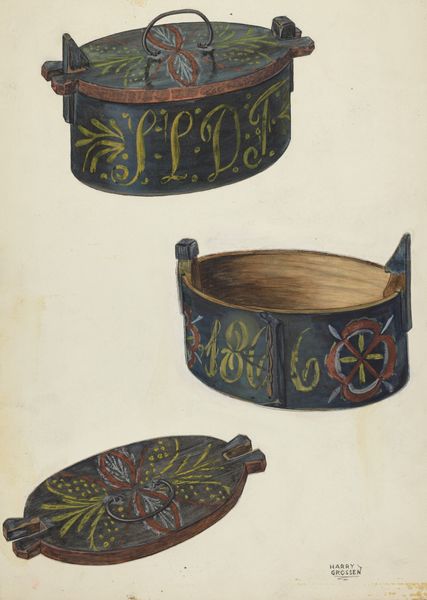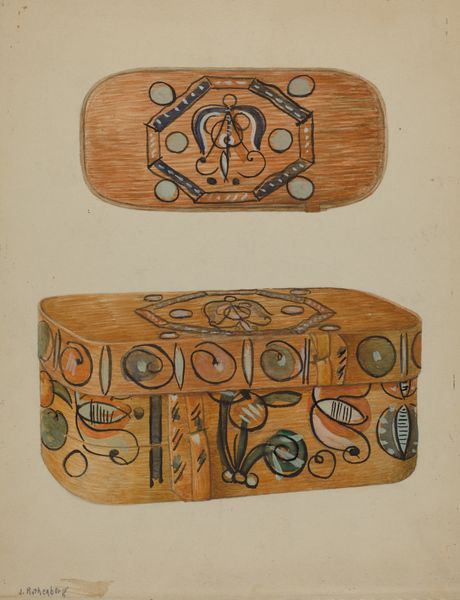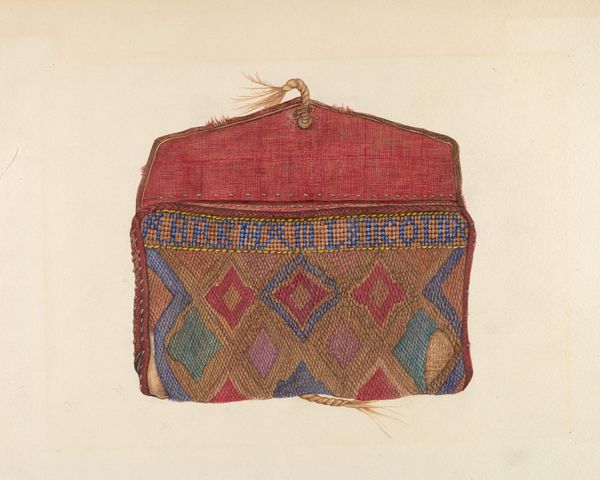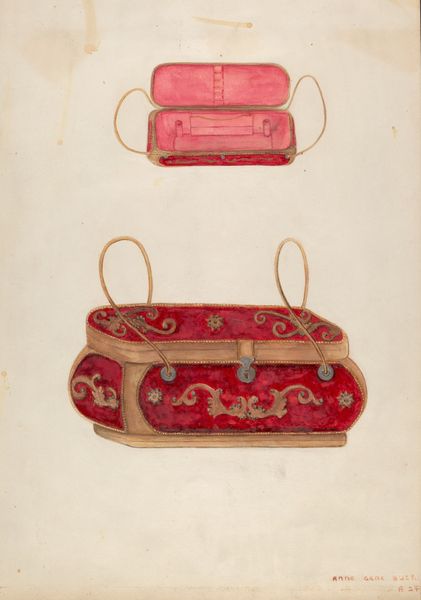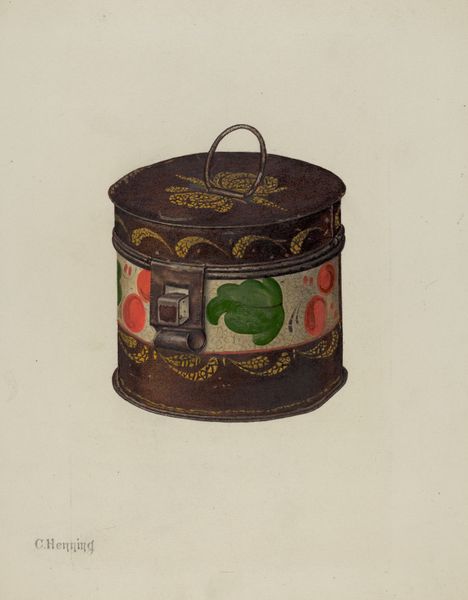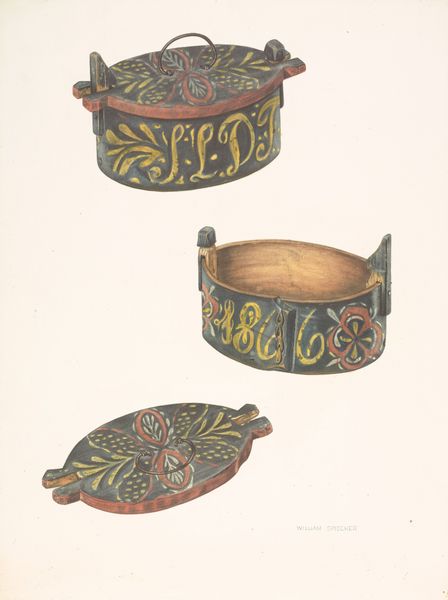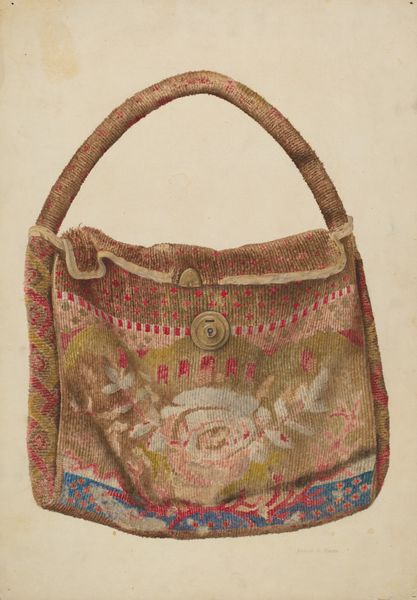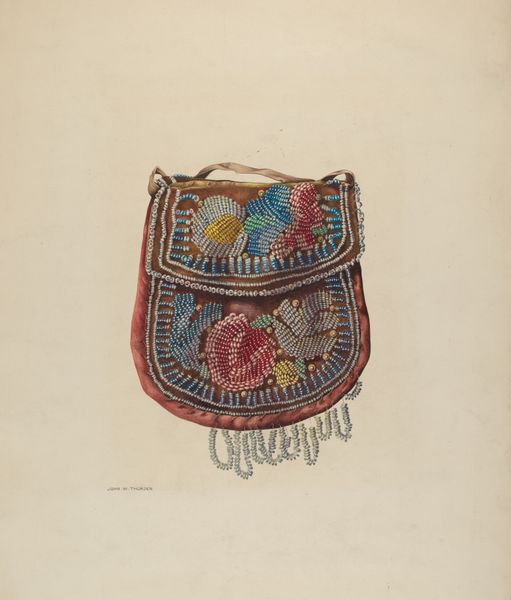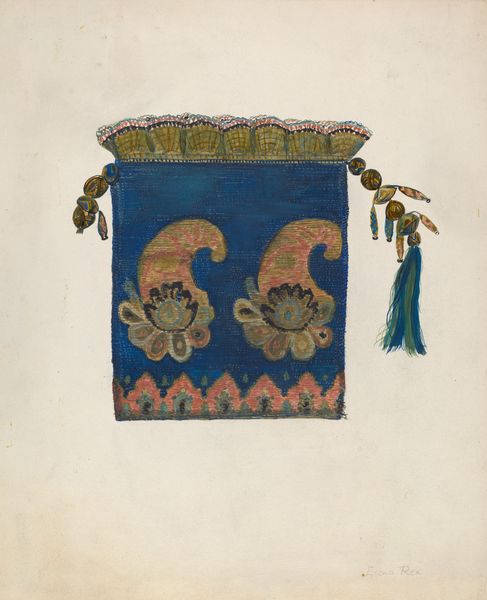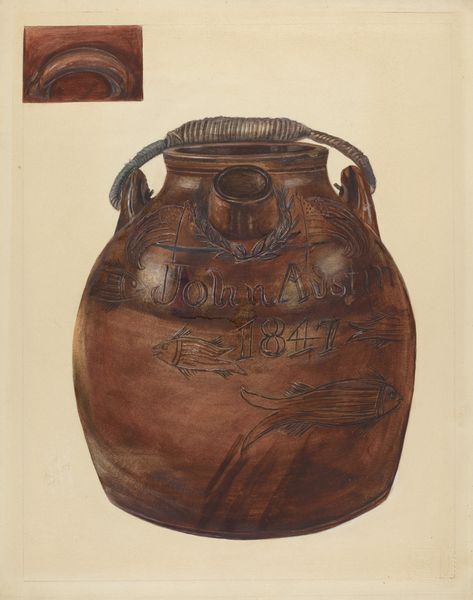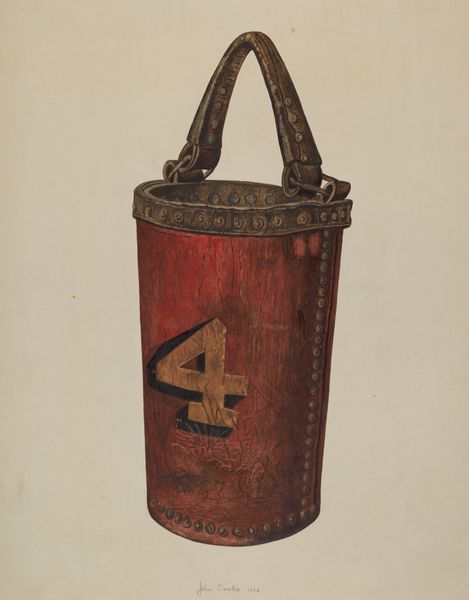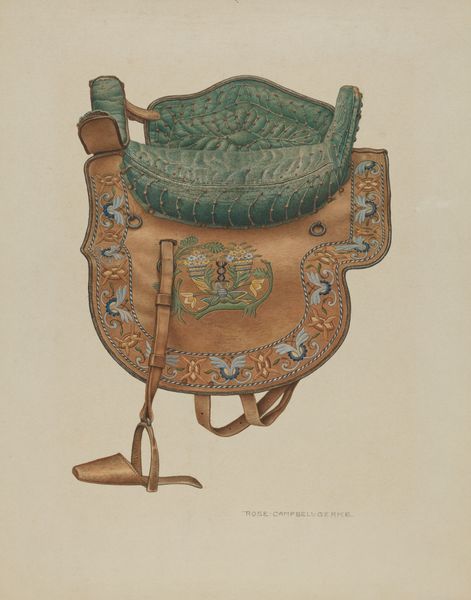
drawing, mixed-media
#
drawing
#
mixed-media
#
geometric
#
ceramic
#
watercolor
Dimensions: overall: 38 x 55.8 cm (14 15/16 x 21 15/16 in.) Original IAD Object: .124m high; .099m wide
Copyright: National Gallery of Art: CC0 1.0
Curator: Immediately striking, isn’t it? There's a naive quality to the rendering. It’s deceptively simple. Editor: It is deceptively simple! What are we looking at exactly? Curator: This mixed media drawing from around 1936 is called "Sewing Box" by Albert Levone. Notice how it presents not one, but three distinct views of painted boxes stacked vertically on the page. It employs both watercolor and drawing techniques to achieve its charming effect. Editor: My focus immediately shifts to the presumed materials: the likely construction of these boxes using wood. I also observe the layered craft of production. From wood to utilitarian object, and ultimately embellished with decorative painting. The labor here speaks to a different time. Curator: The layering, as you mentioned, extends beyond the material. Look closely. Levone carefully articulates geometric forms – the central diamond motifs repeating throughout, counterpointed by the organic, swirling foliage. It creates a structured yet dynamic visual field. Editor: And what about the purpose of these objects within a domestic setting? A sewing box signifies labor— traditionally assigned. Considering this within its historical period allows one to imagine who was using these tools, and to ask questions about skill, gender, and economic factors. Curator: You're touching on some complex issues, certainly! But even considered purely formally, notice the chromatic relationships, The vibrant reds and blues contrast and create tension. A sophisticated arrangement. It is, however, in its compositional order that allows for that tension to exist without utter chaos. Editor: Right. We often separate folk craft from "high art," but Levone challenges that distinction by portraying a quotidian item as worthy of artistic contemplation and recording it within a drawing practice. These painted surfaces would have been very much a part of everyday lives; perhaps the function mattered as much as the craft? Curator: Ultimately, it’s a captivating illustration that blends utility with visual pleasure. It's the harmony and tensions within this visual structure that provides much to think about. Editor: Indeed. Levone presents the transformation of material, object and daily rituals into art; thus sparking questions and connections to social context as well.
Comments
No comments
Be the first to comment and join the conversation on the ultimate creative platform.
